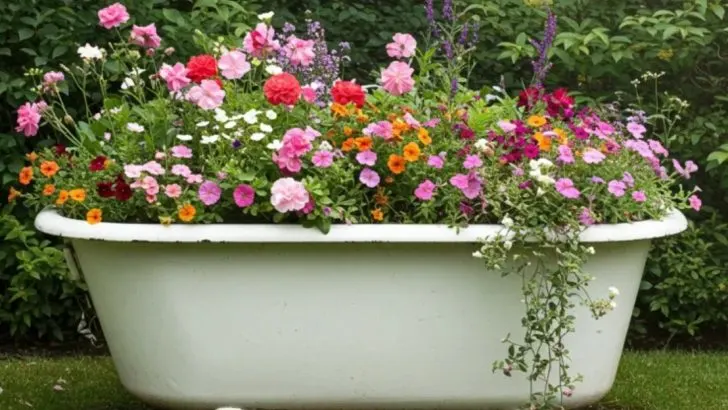You don’t need a truckload of lumber or a trip to the hardware store to build raised garden beds. In fact, some of the best DIY beds are made entirely from things you already have—wood scraps, old drawers, broken furniture, even discarded pallets. These 18 simple ideas show how easy it is to turn waste into something wildly useful.
Whether you’re short on time, tools, or budget, these raised bed builds require minimal effort and zero perfectionism. No fancy cuts, no expensive screws—just resourcefulness and a desire to get planting. Some take less than an hour and use nothing but a hammer and some reclaimed nails.
From rustic charm to modern minimalism, these beds prove that functionality doesn’t have to cost a thing. And with summer planting in full swing, there’s no better time to repurpose old materials and give your garden a productive new edge. Let’s dig into the best ideas you can build from almost nothing.
Pallet Wood Planter
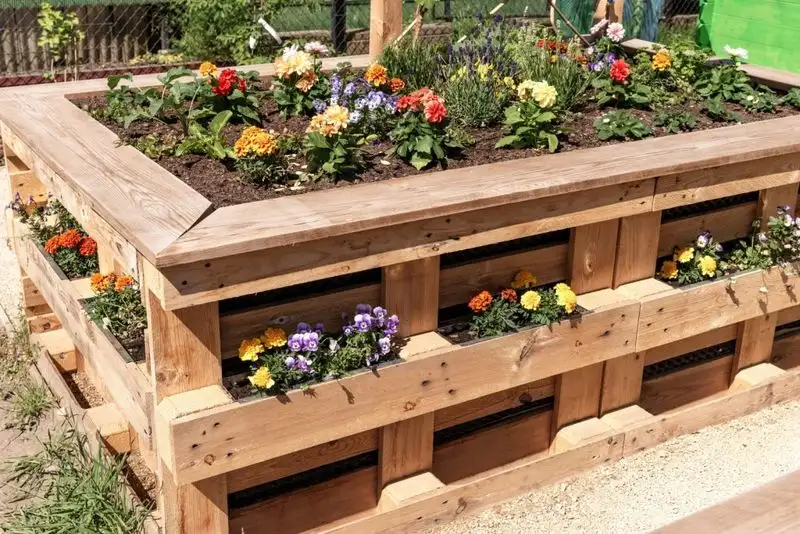
Pallets often find themselves discarded, but their sturdy wood makes for an excellent raised bed material. By dismantling and reconstructing these wooden structures, you can craft a charming garden feature. Begin by selecting pallets in good condition to ensure stability. The slats can be arranged horizontally or vertically, providing flexibility in design. Whether left raw for a rustic look or painted for a splash of color, pallet wood offers versatility. This project not only recycles but also adds character to your gardening space.
Old Tire Terraces
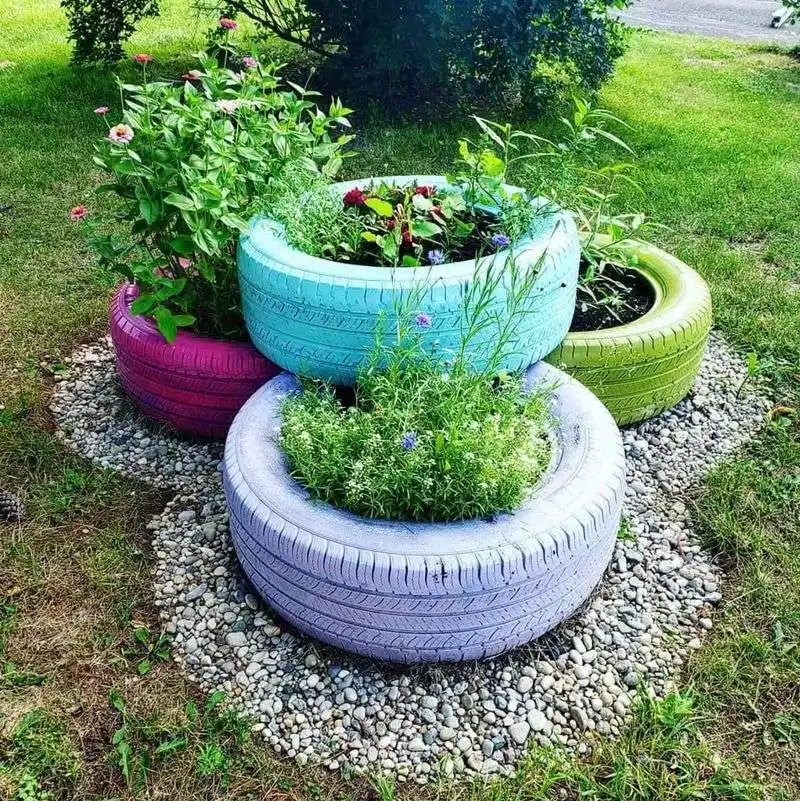
Have a few old tires lying around? Stack them to create terraced garden beds that are both functional and visually appealing. By stacking tires, you can create layered plantations, ideal for plants with different soil needs. Paint the tires in bright colors to add an artistic touch to the garden. The circular shape of the tires provides a unique planting space, perfect for small herbs or flowering plants. This inventive use of tires not only repurposes waste but also brings a playful element to your garden.
Cinder Block Beauty
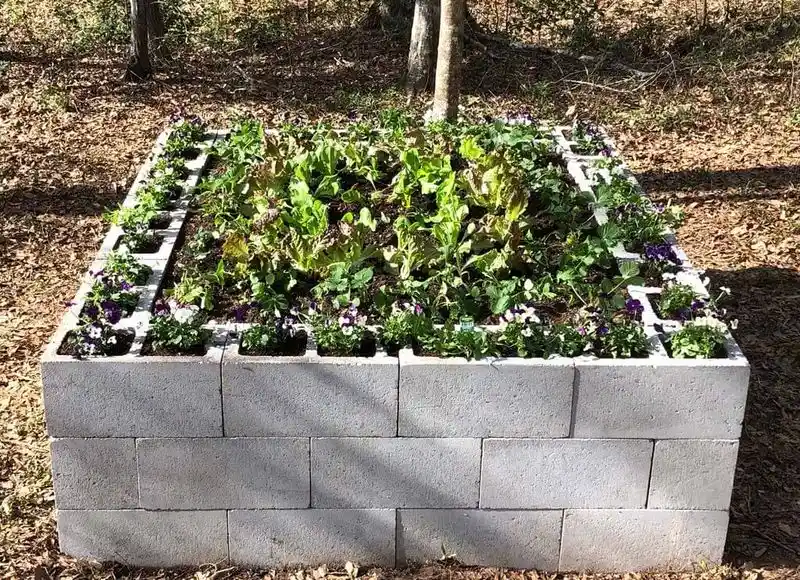
Cinder blocks are often overlooked, but they offer a robust foundation for raised beds. Their uniform shape makes them easy to stack, allowing you to customize the height and shape of your bed. Fill the blocks with soil and plants, turning them into individual mini planters. This structure is particularly suited for larger plants, providing ample support and drainage. Additionally, cinder blocks retain heat, making them perfect for growing heat-loving plants like tomatoes or peppers.
Wine Crate Charm

Wine crates, with their sturdy build and perfect size, make excellent small raised beds. They can be stacked to provide height or laid out in rows for a sprawling effect. Fill them with rich, loamy soil and watch as your herbs or flowers thrive. The natural wood finish of the crates adds a rustic charm, blending seamlessly into any garden backdrop. This option is particularly great for those who enjoy a touch of elegance and history, as each crate tells a story of its own.
Bathtub Blooms
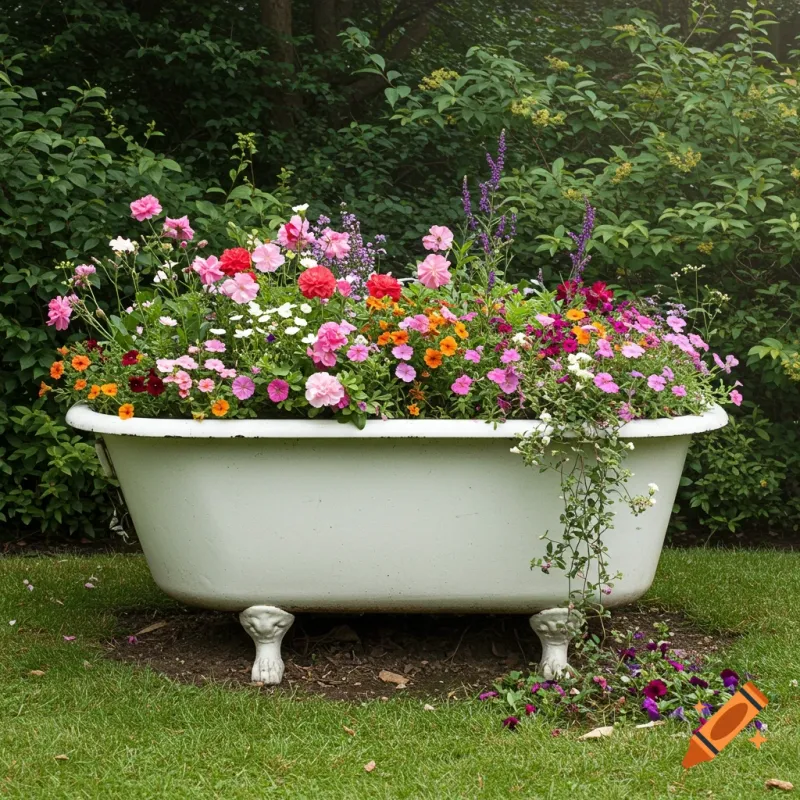
An old clawfoot bathtub can become a stunning centerpiece in your garden. Its deep basin is perfect for a variety of plants, allowing roots to thrive. Position the tub on a stable surface and drill drainage holes if needed. The porcelain finish offers a vintage aesthetic, contrasting beautifully with the vibrant plants inside. This unique planter transforms what might be seen as junk into a garden jewel, proving that creativity knows no bounds in gardening.
Log Cabin Layers
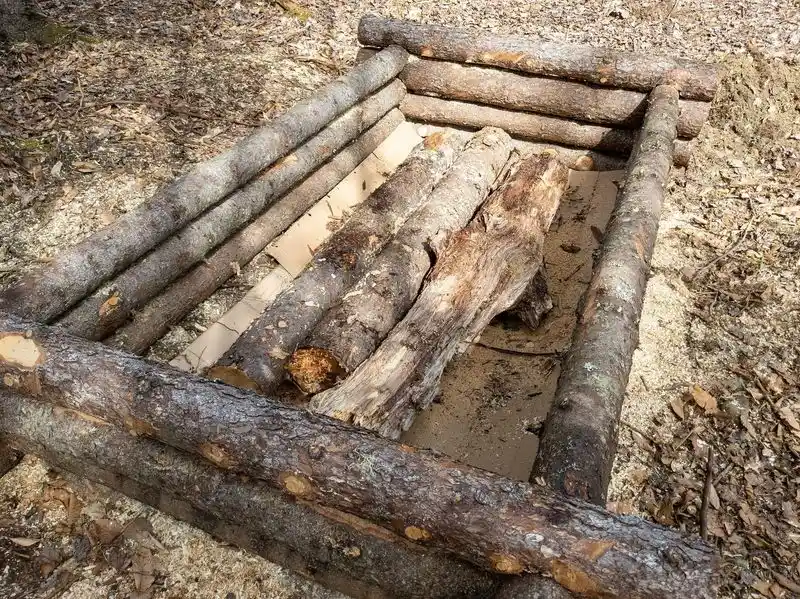
Logs, whether from fallen trees or old firewood, can be stacked to create a natural raised bed. Their organic shape and texture blend effortlessly into woodland gardens. By arranging logs in a rectangular or circular fashion, you can form an enclosed planting area. This method is excellent for creating a rustic aesthetic, while also providing a habitat for beneficial insects. As the logs decay over time, they enrich the soil, supporting healthy plant growth.
Brick Border Beauty
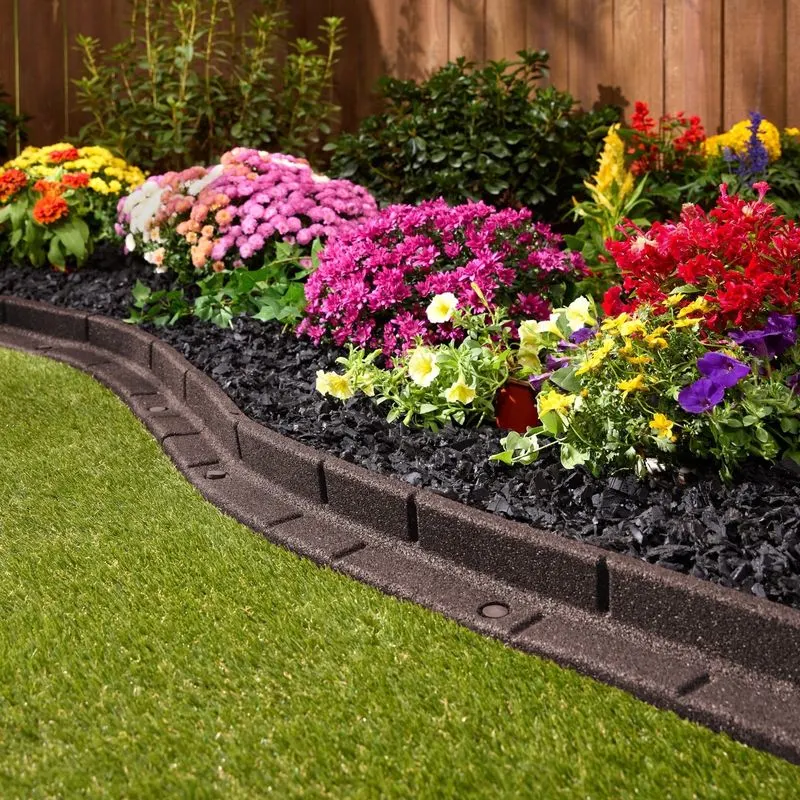
Bricks, with their timeless appeal and durability, make for an excellent choice in raised bed construction. Whether you stack them in a neat row or create a pattern, bricks offer endless design possibilities. Their weight ensures stability, and the gaps between can be filled with soil for additional planting space. Using recycled bricks not only reduces waste but also adds a touch of history and character to your garden setup.
Drawer Delight
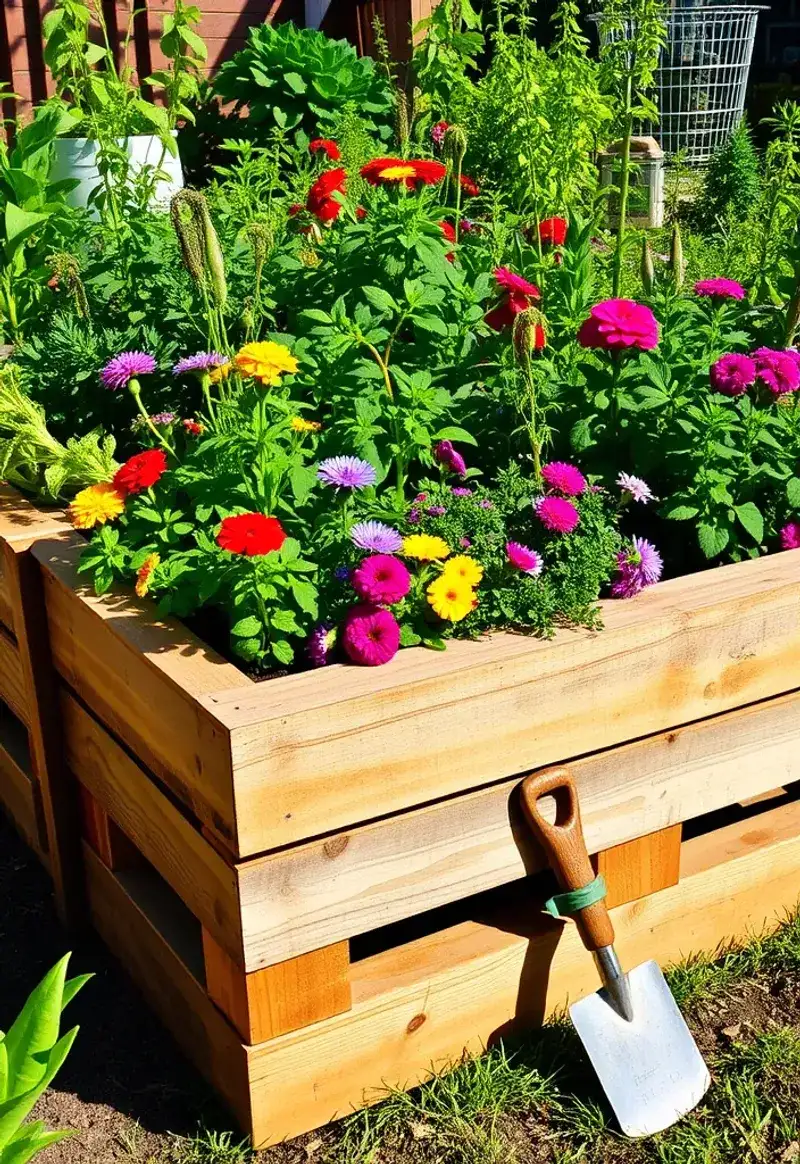
Old drawers, often cast aside during furniture upgrades, can find new life as charming garden beds. Arrange them in a tiered fashion or side by side for variety. Each drawer acts as a mini planter, perfect for small herbs or flowering plants. The wood can be painted or left natural, allowing for customization to suit your garden’s theme. This approach not only recycles materials but also adds a quirky, playful element to your garden’s design.
Suitcase Succulent Sanctuary
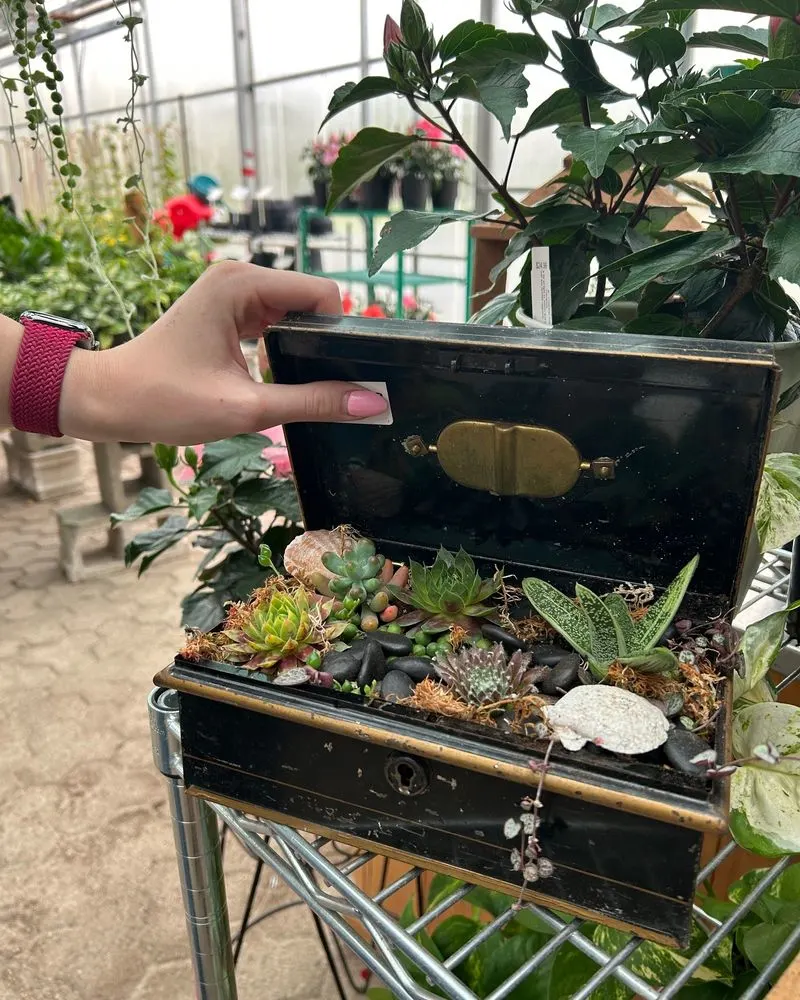
Transform an old suitcase into a stylish succulent planter, offering a touch of whimsy to any outdoor space. Line the suitcase with plastic to prevent water damage and fill it with well-draining soil. Succulents, with their low water needs and diverse forms, thrive in this shallow planter. The suitcase adds a vintage flair, turning a forgotten item into a conversation piece. This project combines nostalgia with practicality, perfect for those who appreciate unique design solutions.
Bed Frame Bounty
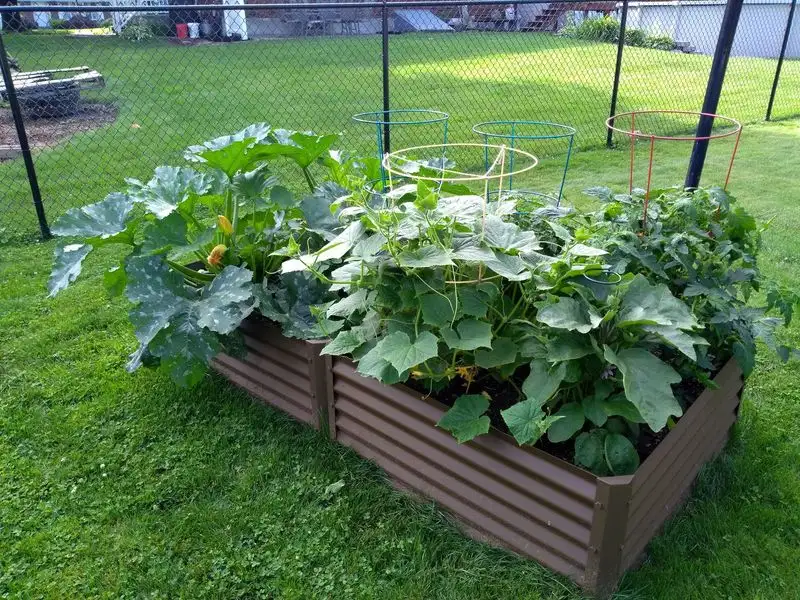
An old bed frame can serve as a distinctive border for a raised garden. By placing it on a level surface and filling the interior with soil, you create a defined planting area. The headboard and footboard provide natural trellising opportunities for vining plants. This creative reuse not only saves the bed frame from the landfill but also adds a whimsical touch to your garden. Ideal for those who love blending vintage elements with modern gardening practices.
Bucket Brigade
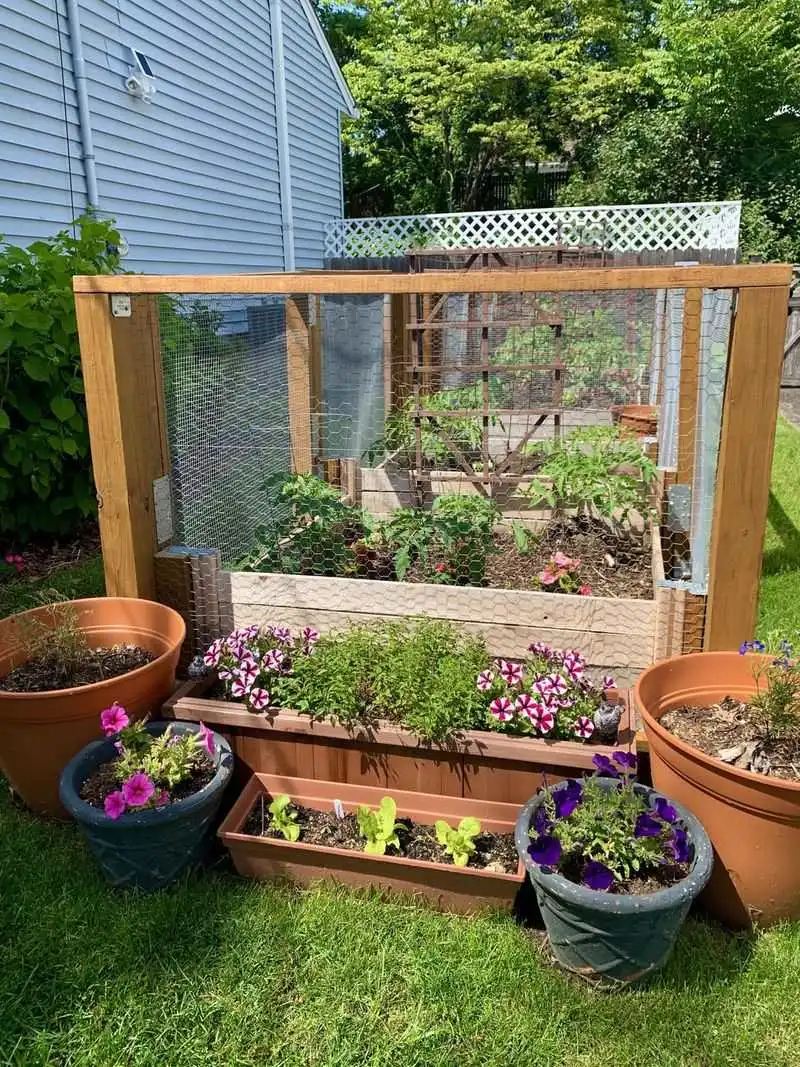
Old metal buckets, often rusting away in storage, can be repurposed into charming garden beds. Drill drainage holes at the bottom and fill them with potting soil. The buckets can be grouped together or spaced apart, depending on your garden’s layout. Their portability is a significant advantage, allowing you to move plants according to sunlight and space needs. These make excellent containers for herbs or small vegetables, adding an industrial chic vibe to urban gardens.
Glass Bottle Borders
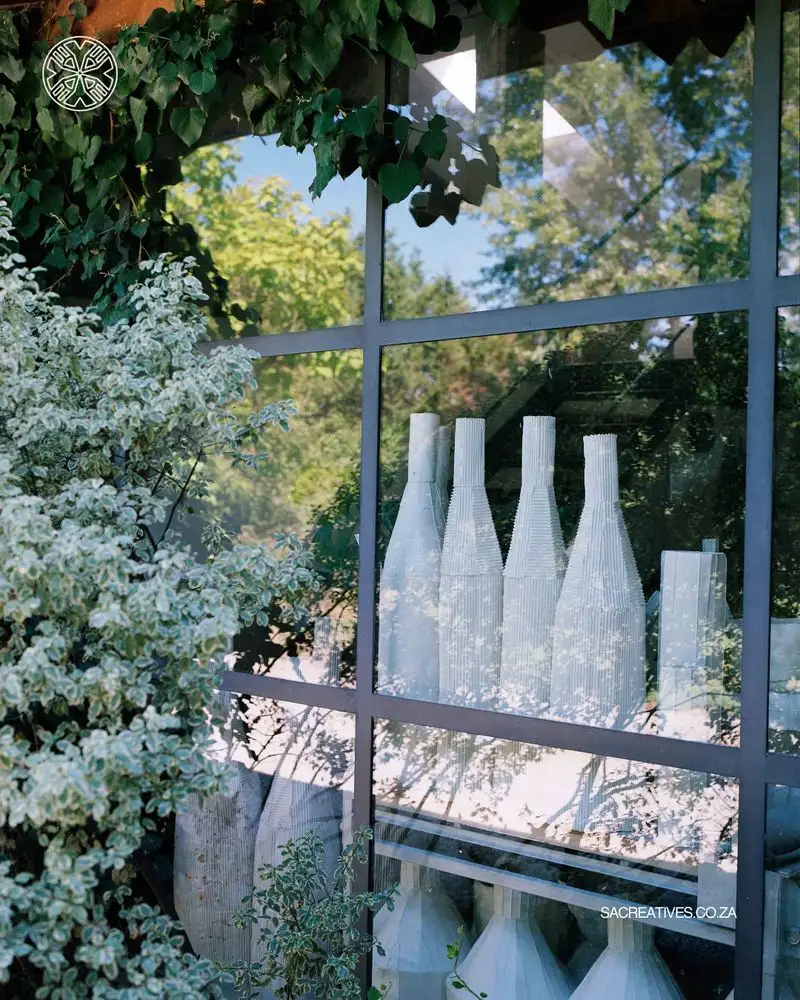
Empty glass bottles, when buried neck down in the ground, create an attractive and eco-friendly border for raised beds. The varying colors and textures of the glass add visual interest, reflecting sunlight in captivating ways. This method not only reuses materials but also creates a sturdy barrier to soil erosion. Ideal for gardeners looking to incorporate artistic elements into their outdoor spaces while maintaining sustainability.
Crate Cascade
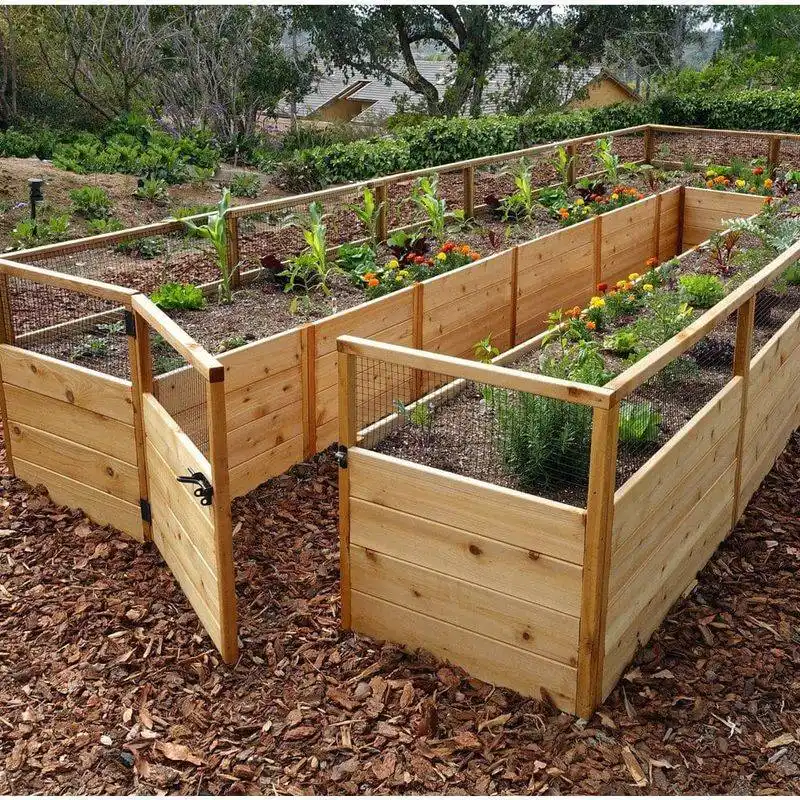
Wooden crates can be stacked or arranged in a cascade to create a tiered garden bed effect. This setup is perfect for balconies or smaller patios where space is limited. Each crate can house different plant species, allowing for diverse arrangements. The tiered design maximizes planting space while providing easy access to each layer. This approach not only utilizes existing materials but also enhances vertical gardening possibilities.
Wagon Wheel Wonder
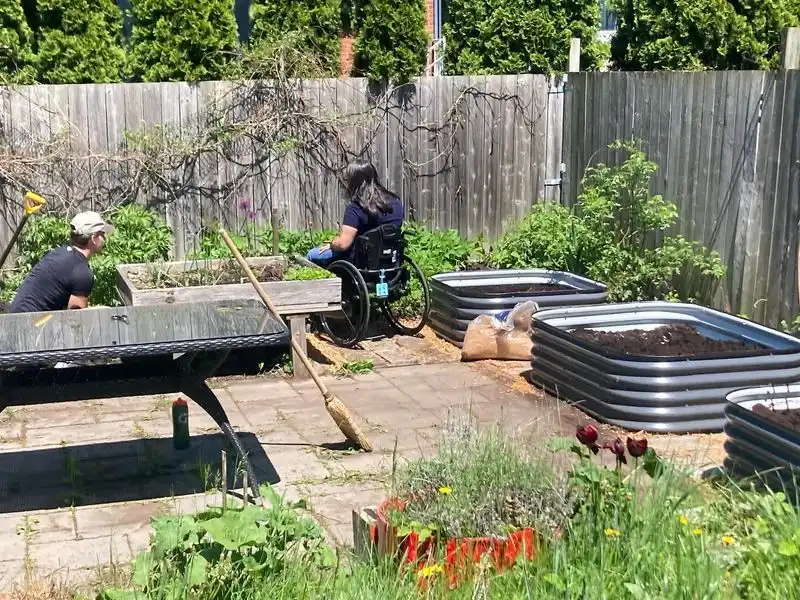
A vintage wagon wheel can be repurposed into a unique planter that brings a touch of rustic charm to any garden. By securing it upright or laying it flat, the wheel’s compartments can be filled with soil and plants. This creative use of a traditional item adds historical flair and visual interest. The wheel’s spokes offer natural divisions for planting different flowers or herbs, making it an intriguing focal point for garden enthusiasts.
Laundry Basket Layers
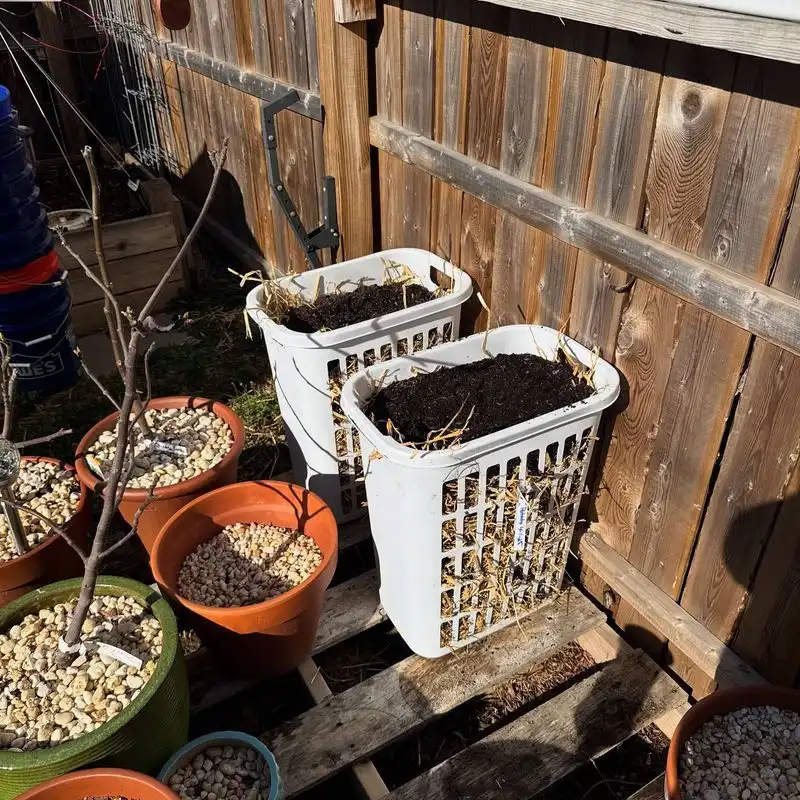
Plastic laundry baskets, with their perforated sides, offer excellent drainage and can be stacked to create tiered garden beds. Line them with landscape fabric to hold soil in place and plant your favorite blooms or herbs. These baskets are lightweight and easily moved, making them ideal for renters or those with changing garden needs. Their flexibility in arrangement allows for creativity in small spaces, transforming mundane items into delightful garden features.
Trellis Tubs
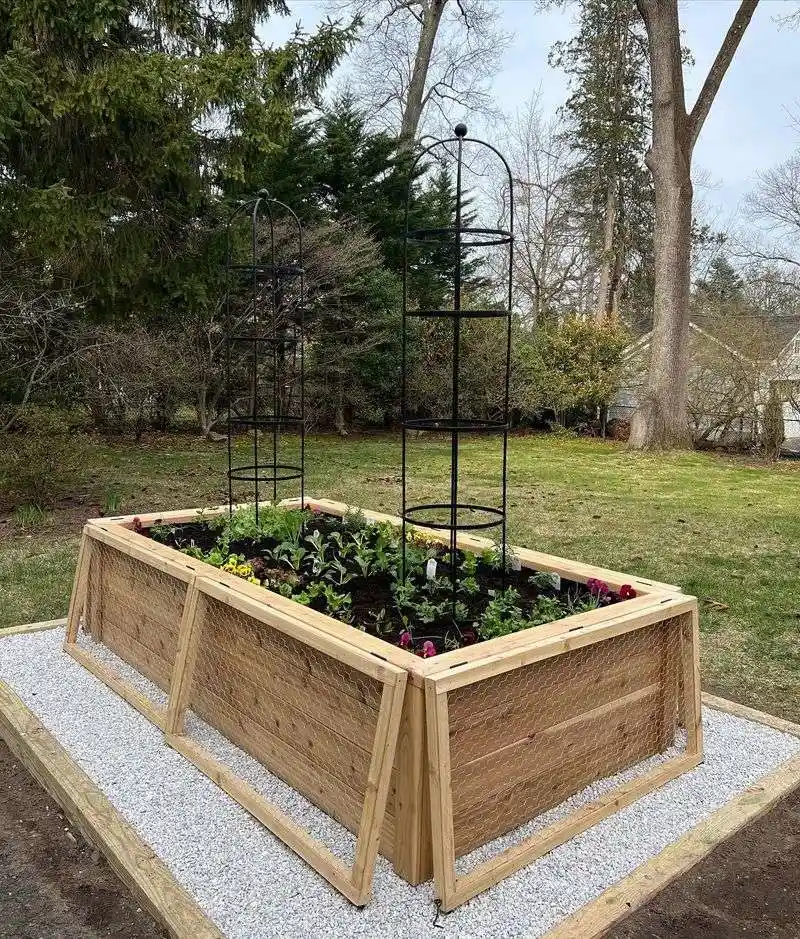
Plastic tubs paired with trellises create perfect environments for climbing plants. Drill holes for drainage and fill with nutrient-rich soil. The addition of a trellis provides support for plants like beans or peas, encouraging vertical growth. This setup is ideal for gardens with limited space or those looking to maximize yield. Tubs are easy to move and manage, allowing gardeners to customize layouts seasonally. This approach merges practicality with innovative use of everyday items.
Colander Planters

Metal colanders, often left idle in kitchens, can be transformed into charming hanging planters. Their built-in drainage makes them perfect for small herbs or trailing plants. By hanging them in a sunlit area, you create a cascading effect that adds life to any space. The colander’s open design provides excellent airflow to roots, promoting healthy growth. This creative reuse brings a touch of whimsy and utility, seamlessly blending kitchen and garden aesthetics.
Gutter Gardens
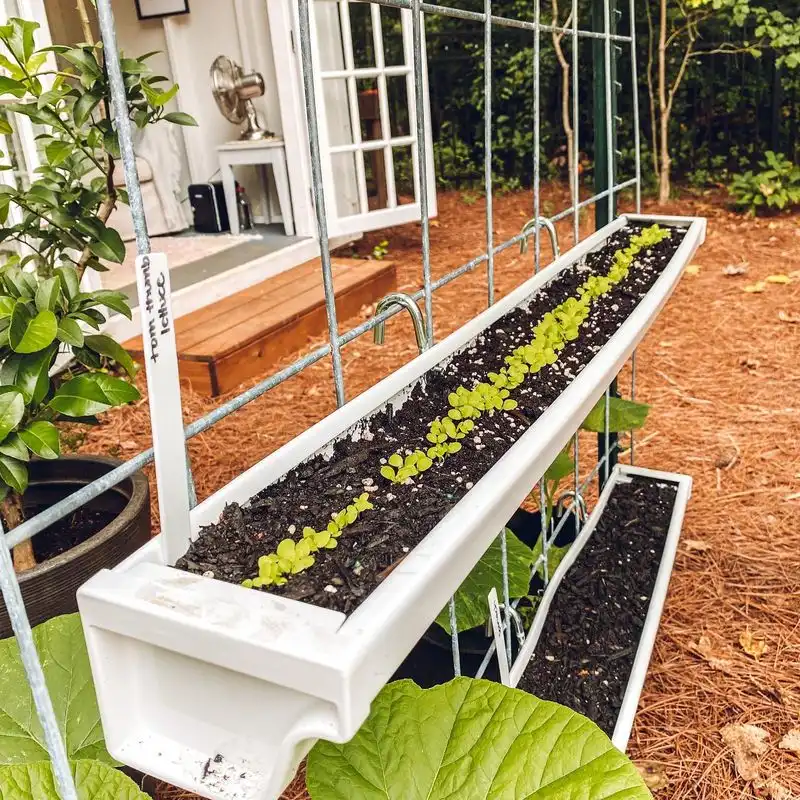
Old rain gutters, when mounted horizontally along a wall or fence, offer a unique vertical gardening solution. Drill holes for drainage and fill with lightweight potting mix. This setup is perfect for herbs, strawberries, or small flowers, maximizing limited space efficiently. The gutters’ linear design allows easy access for watering and harvesting. This innovative use of building materials creates an organized, tidy garden appearance, ideal for urban spaces.

